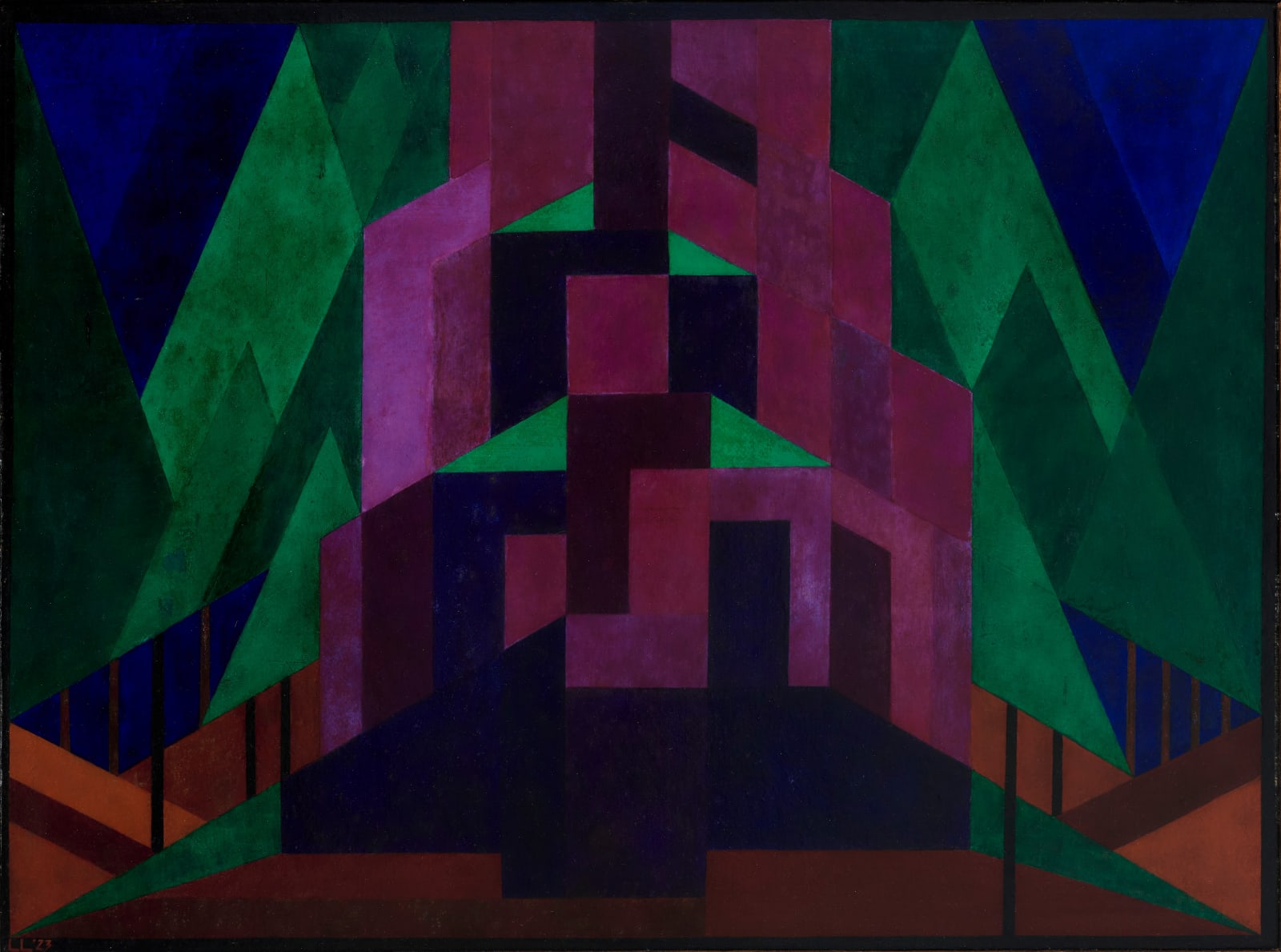Louise Loeber (1894-1983)
Signed, dated & titled 'Lou Loeber/Laren N.H./"Rots" 1923' (verso)
Lou(ise) Marie Loeber, the eldest of seven children, was born into a prosperous Amsterdam family of paper manufacturer Gerhard Loeber and Charlotte Landré.[1] In 1901, the family relocated to Villa Zonnenhoef in Blaricum, where her father founded a progressive elementary school. This nurturing home provided a carefree childhood and an intellectually stimulating environment. Her father’s connections to the local artistic milieu exposed Loeber to art from an early age, setting the stage for her future as an artist.
In 1915, Loeber passed the entrance exam for the Rijksakademie. In Amsterdam, she stayed at Suze Bauer’s socially progressive boarding house, which introduced her to impoverished neighborhoods, expanding her social awareness. Finding the academy overly conservative, Loeber left prematurely and returned to Blaricum. At Zonnenhoef, her father supported her artistic ambitions by building her a garden studio. In 1931, Loeber married painter Dirk Koning, asserting her independence by rejecting traditional domestic roles and choosing to remain childless, dedicating her life entirely to art.
Loeber’s artistic beliefs were formed by the modernist ideals of Cubism, Le Corbusier, and De Stijl. While she admired Piet Mondriaan as a kindred spirit, she rejected fully abstract art, deeming it elitist and inaccessible to ordinary people. Instead, her work maintained a connection to recognizable reality, aligning her more closely with fellow Blaricum artist Bart van der Leck. Favoring the rectangularity of landscapes and factories, simplifying them into bold compositions of strong lines and contrasting colors, her style evolved from representational forms to near-abstraction.
For Loeber, the artist was not a “genius” but a facilitator of an impersonal visual language, convinced that balanced compositions could inspire harmony and promote a classless society. Unlike Kandinsky, who saw artists as prophets, Loeber viewed them as leaders of a better socialist future. Art, according to Loeber, was a tool for societal transformation. Inspired by Albert Gleizes’ Du Cubisme (1920), she believed that simplified, cubist renderings of reality could contribute to the development of a socialist society.[2] Committed to her socialist convictions, she sought to make art accessible to all by offering multiples of her paintings and creating the first art lending library.
Loeber traveled extensively throughout Europe, delineating landscapes and dilapidated buildings in her sketchbooks. A pivotal moment in her career occurred in 1922 during an extended stay in Eisenach, Germany.[3] A visit to the Bauhaus in Dessau left a lasting impression; Walther Gropius himself guided her through the school, introducing her to the work of Paul Klee. This trip through the Thuringia region catalyzed her artistic output. Her painting Rock in the Forest and her Eisenach sketchbook, both kept in the Centraal Museum in Utrecht, reveal her process of abstracting the natural world.[4] Like Mondriaan, she explored horizontals and verticals to distill the essence of her environment in her sketchbooks.
Overlooked for much of her life as a pioneering modernist, Loeber’s legacy endures. The 363 sketches and studies held the Rijksmuseum’s print room provide invaluable insight into her artistic evolution and her unwavering commitment to making art accessible to all.
[1] Anna de Haas, "Loeber, Louise Marie", Digitaal Vrouwenlexicon van Nederland, Huygens Instituut, Amsterdam 13.01.2014
[2] Marente Bloemheuvel, Lou Loeber. Utopie en werkelijkheid, Laren 1993, pp. 15-16
[3] “Herinneringen door Lou Loeber”, Mededelingen, Vol. 28-29, Centraal Museum Utrecht Spring1980, p. 19
[4] Rots in een bos, oil on triplex, 100 x 70 cm., monogrammed & dated ‘LL 23’, inv.no 19383 & Schetsboek (studies en landschappen voornamelijk bij Eisenach (O.Duistland) verder enkele gezichten op Naarden), 18.4 x 22.4 cm., inv.no. 22992
Provenance
Collection Van Lier, Blaricum, by 1983
Sale, Christie's, Amsterdam, 10 December 1996, lot 350
Sale, Venduehuis, The Hague, 12 November 2014, lot 88
Exhibitions
Book, Lou Loeber, tentoonstelling bij Book, 1934 (handwritten exhibition catalogue)
Nijmegen, Museum Commanderie van Sint-Jan, Lou Loeber 1894-1983, schilderijen, ontwerpen en prenten, 19 March-17 April 1983, no. 16



